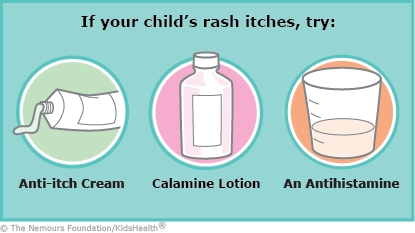Gianotti-Crosti Syndrome: How to Care for Your Child
The rash of Gianotti-Crosti syndrome (GCS) is the skin's response to a viral or bacterial infection. It typically lasts a few weeks.


GCS can happen after a child has an infection with a virus or bacteria. Children with GCS often had a respiratory or gastrointestinal illness the week before the rash appeared. Health care providers believe GCS is a reaction that the body has as it fights the infection.
The most common sign of GCS is a rash that appears on the cheeks, buttocks, arms, and/or legs. Sometimes a rash also appears for a shorter time on the belly, chest, or back. The rash has many small pink or brown bumps that might turn into blisters. It may or may not itch. Some kids also feel tired and might have a low fever, diarrhea, or swollen lymph nodes (glands).
In some cases, the virus causing GCS also can cause liver inflammation. Your health care provider may have done blood tests to look for signs of this.
GCS goes away on its own, usually in a few weeks, although some cases can take a few months. The rash usually does not come back or leave scars. If the rash itches, the health care provider may recommend a lotion, cream, or medicine to make your child more comfortable.

-
If your health care provider prescribed an anti-itch cream, apply it as directed.
-
Moisturizers and calamine lotion also can help with itching. Apply calamine lotion according to the directions on the label.
-
If itching keeps your child up at night, an antihistamine by mouth may help. Follow the health care provider's directions for when to give the medicine and how much to give.
-
If the GCS was caused by a condition that needs to be treated, follow the health care provider's instructions.


The rash does not go away as expected or worsens, or your child has:

Your child:
-
Has severe diarrhea.
-
Has severe belly pain.
-
Is vomiting and cannot keep fluids down.
-
Appears dehydrated; signs include dizziness, drowsiness, a dry or sticky mouth, sunken eyes, producing less urine or darker than usual urine, crying with little or no tears.

Once the rash goes away, your child may have patches of skin that look lighter or darker where the rash was. This is more common in kids with dark skin. After a few months, the skin will return to its usual shade.